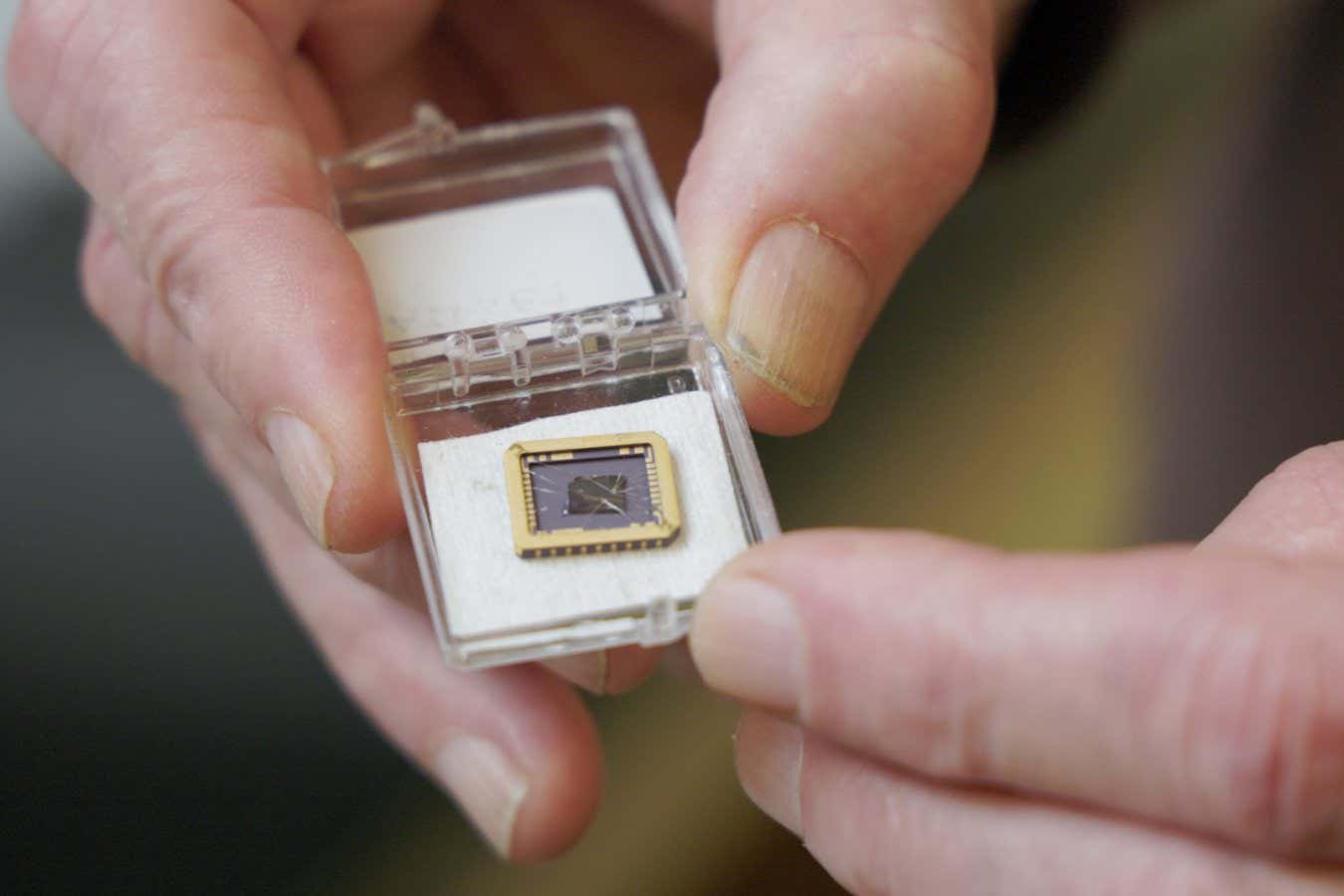Researchers have created a functional semiconductor from graphene for the first time, creating the possibility of computer chips with greater performance and efficiency
By Matthew Sparkes
4 January 2024
The team’s graphene device, grown on a silicon carbide substrate chip
Georgia Institute of Technology
A working, scalable semiconductor has been created from graphene for the first time, potentially paving the way for a new type of computer with greater speed and efficiency than today’s silicon chips.
Graphene is a material made from a single layer of carbon atoms that is stronger than steel at comparable thicknesses. It is an extremely good electrical conductor and is highly resistant to heat and acids. But despite its advantages, a working graphene semiconductor, which can be controlled to conduct or insulate electricity at will, has evaded scientists. Such semiconductors are key to creating the logic chips that power computers.
Advertisement
The problem has been the lack of what is known as a bandgap. Semiconductors have bands of higher and lower energies and a point – the bandgap – at which excited electrons can hop from one to the other. This effectively allows switching on and off of the flow of current, so it is either conducting or not conducting, creating the binary system of zeroes and ones used in digital computers.
Read more
Fastest ever semiconductor could massively speed up computer chips
While previous research has shown that graphene can be made to act like a semiconductor on a small scale, it had never been scaled up to sizes that would make a computer chip practical. Earlier work has shown that wrinkles, domes and holes in graphene sheets can have unusual effects on electrical flow, creating the possibility that logical chips could be made by creating the right landscape of flaws. But to date, nothing has scaled up.
